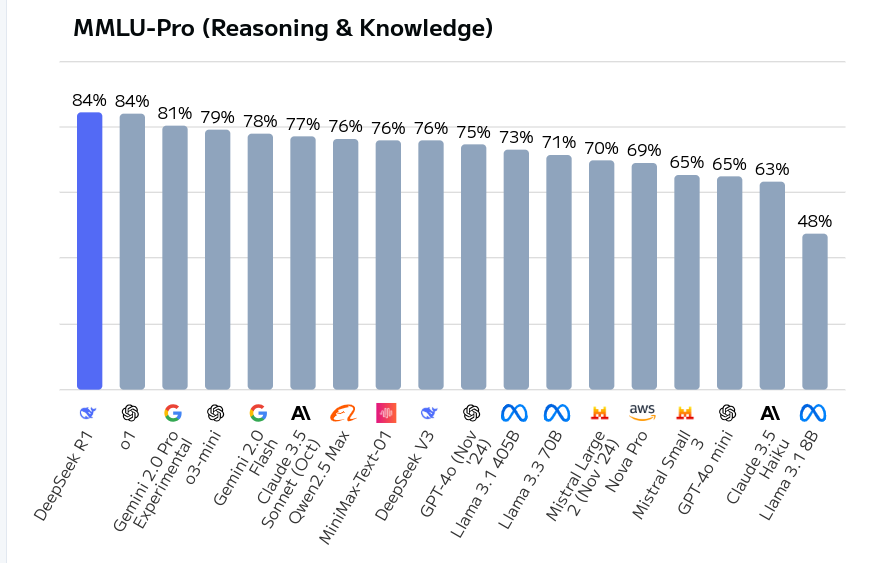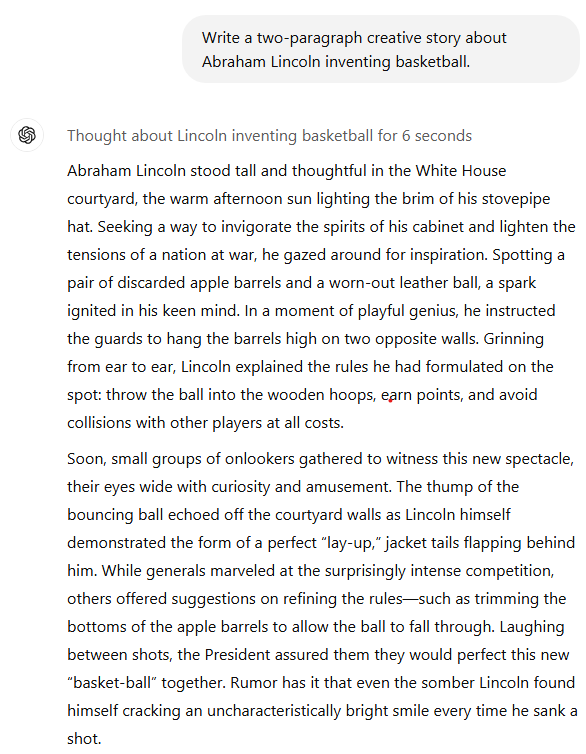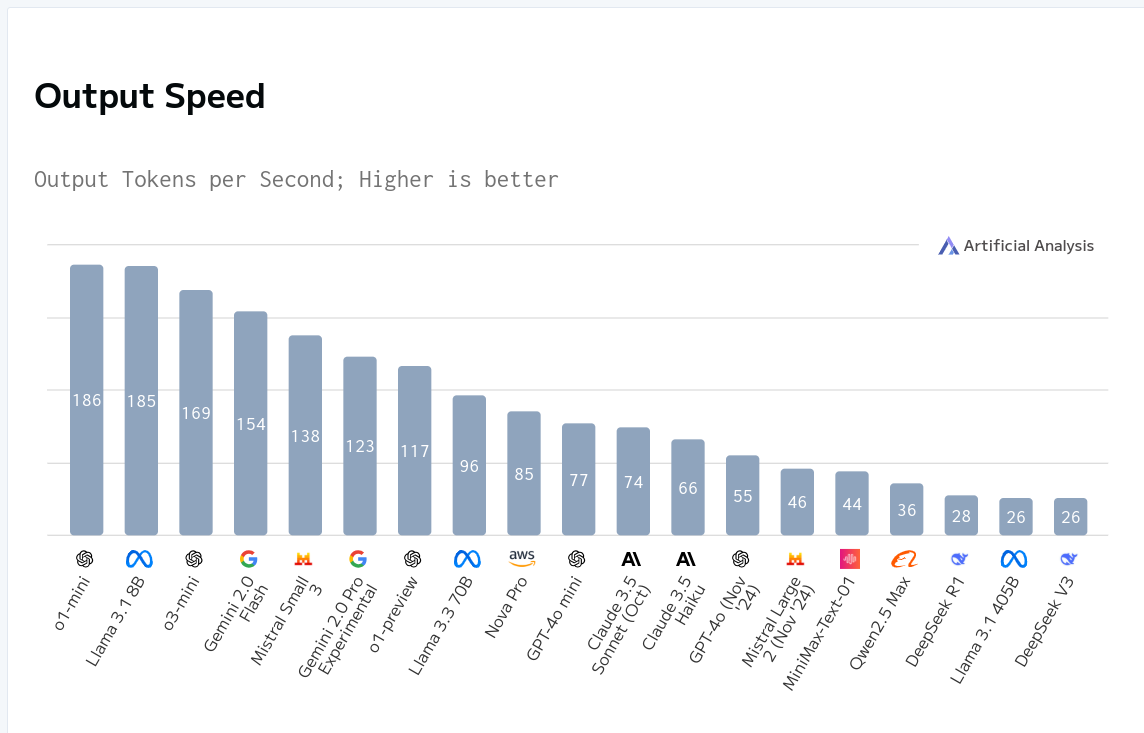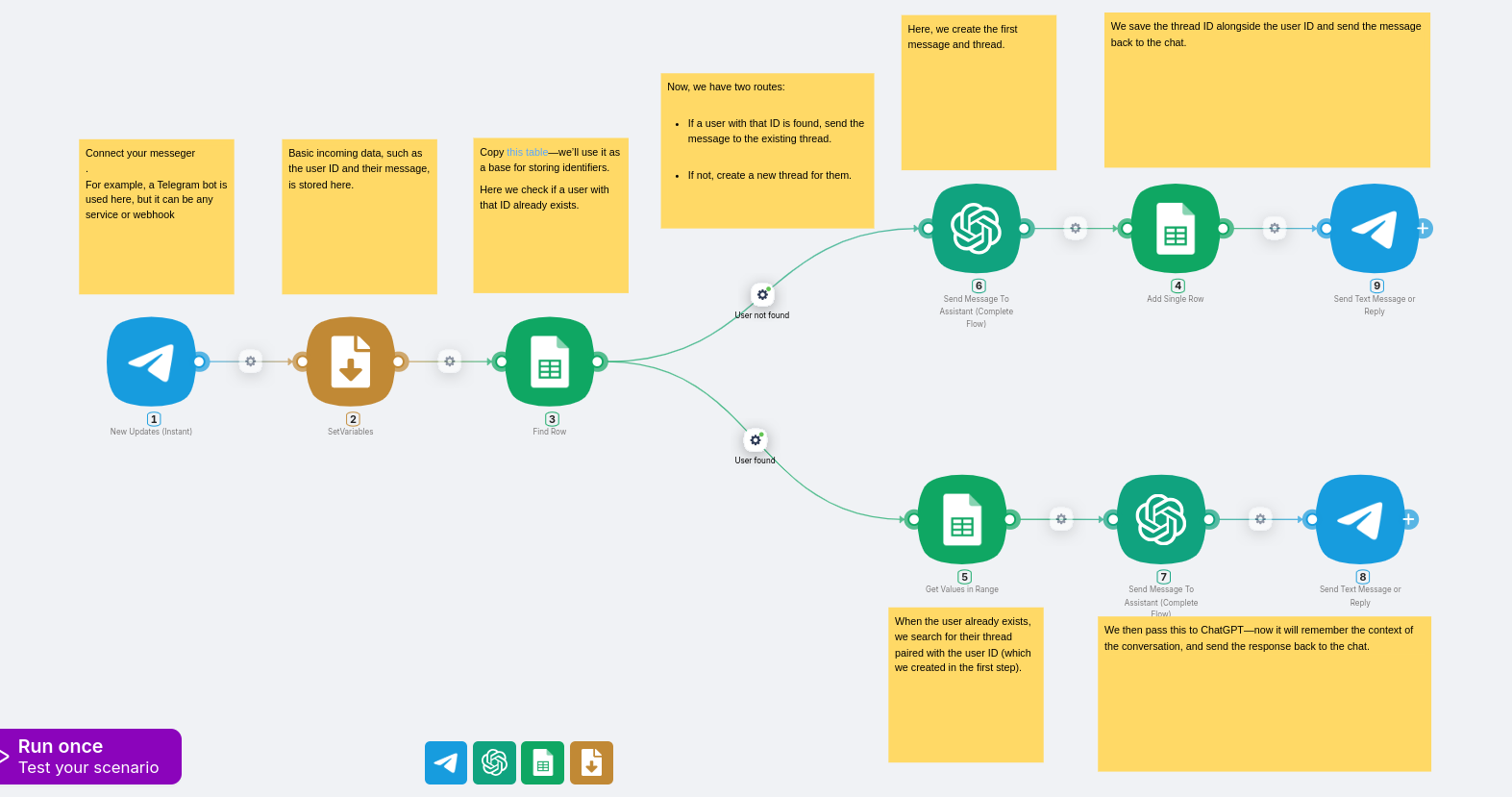


Let’s imagine that you’re part of a small team, maybe in digital marketing, e-commerce, SaaS, or media. Your team wants to automate routine communications, like customer support replies. You’ve tried OpenAI, but the costs are climbing, and the responses don’t always hit the mark for your brand voice.
DeepSeek steps up with sharper reasoning and a lighter price, like a partner who gets the job done without fuss. ChatGPT is powerful, but the price tag and complexity can sink your budget. That’s where DeepSeek First Reasoning Model sails in – a sturdy, affordable model designed to be affordable and smart.
Below, we’re showing where DeepSeek first model beats OpenAI, and where it doesn’t. We’re also showing how to test them both by integrating the models into your workflows.
Reasoning in AI is like having a partner who can solve a problem with you, step by step. DeepSeek's first reasoning model, the R1, handles this with its chain-of-thought (CoT) approach. Instead of jumping to conclusions, it thinks aloud, breaking down complex tasks, like debugging a SaaS app or plotting an e-commerce sales forecast, into manageable chunks. This means less guesswork and more “aha!” moments.
DeepSeek-R1 leans on reinforcement learning (RL), a bit like teaching a kid to ride a bike. You let them wobble, adjust, and eventually learn. Unlike OpenAI’s models like ChatGPT 4o, which often rely on massive pre-training and can feel like they’re solving your task with sheer horsepower, DeepSeek iterates through trial and error to refine its logic.
It scores 84% on the MMLU-Pro benchmark for reasoning and knowledge (on par with OpenAI o1 and well ahead of o3-mini) and tackles coding tasks on Codeforces with a 2029 rating – quite close to o1’s 2061.

DeepSeek-R1 doesn’t only calculate numbers – it understands context. For example, your media team needs a blog outline about “Top 10 Alien Fashion Trends.” DeepSeek won’t just list generic ideas. It’ll use creative twists (like “tentacle-knit scarves”) because it thinks through the “why” behind each step, even including the ‘Wait, the user wants me…’ type of phrase.
At the same time, DeepSeek beats all OpenAI’s models in the Humanity's Last Exam (HLE) benchmark, whose purpose is to test how well the AI solves academic problems. At 9.3% success rate, the model performs better than o3-mini and o1 that show 8.7% and 7.7%, respectively.

For example, Ars Technica tested this model in a standoff with OpenAI, and DeepSeek won in a storytelling task, crafting a story of Abraham Lincoln inventing basketball in 1864.
Here is the reply from DeepSeek:

Here’s what OpenAI o1 has generated:

Here’s how Deepseek first model beats OpenAI: its reply is a whimsically absurd twist on an absurd prompt. The authors loved the part about inventing a sport where players leap not into trenches but toward glory, along with the idea of a "13th amendment" to keep athletes free from the tyranny of poor sportsmanship (whatever that might mean).
It also earns credit for mentioning Lincoln’s secretary, John Hay, which o1 has not done, and his well-known bout of insomnia that apparently led to the patenting of a pneumatic pillow (whatever that might be).
This could mean several things:
DeepSeek has its drawbacks. For example, both of DeepSeek’s current models have slow output speed of 28 and 26 tokens per second. It’s about 6 times slower than o1-mini - one of OpenAI’s fastest models, and twice slower than ChatGPT 4o. When you send a prompt, DeepSeek spends a lot of time thinking about even a simple question, which is why it takes so long.

Unlike the GPT 4o, one of OpenAI’s most popular options, this model can self-correct during its chain of thought, spotting its own flaws before you do. For example, DeepSeek might find a misstep in keyword logic and fix it while generating a reply, saving time of manual handling.
Overall, this is great for small teams that need quality replies. Deepseek first model beats OpenAI models in many use cases, but you’ll have to spend more time to get the reply. At the same time, the model is free to use through the official launcher, while its API is cheaper.
DeepSeek-R1 feels like a teammate who can deliver results without the big price tag. It’s a tool that thinks alongside you, although slowly. Pair it with Latenode, and those clever answers turn into instant actions, like making an email auto-reply or drafting a tweet. This will make work feel less tedious and more like a win.
Small teams are the first to feel the high costs. DeepSeek First Reasoning Model (DeepSeek-R1) offers a lifeline here, outpacing OpenAI in affordability. Its API costs just $0.55 per million input tokens and $2.19 per million output tokens. This is budget-friendly for e-commerce or SaaS squads automating tasks. OpenAI’s o1 model, while powerful, has a bigger price: $15 per million input tokens and $60 per million output tokens.
DeepSeek’s lean design also slashes computational overhead, using 20% less power than OpenAI for similar tasks, per Ars Technica benchmarks. For digital marketers running ad copy queries or media teams drafting content, this efficiency means more bang for fewer bucks expert-grade results without the wallet strain.
It’s not just numbers – it’s strategy. DeepSeek feels like a savvy sidekick, delivering expert reasoning at startup-friendly rates. Pair it with Latenode’s plug-and-play magic, and your team’s automation dreams become affordable, precise, and downright inspiring.
So, where does DeepSeek's first reasoning model (DeepSeek-R1) beat OpenAI’s options? It isn’t really a battle. You should find the right option based on your goals. DeepSeek’s sharp, step-by-step reasoning suits precision-sensitive tasks, like e-commerce teams optimizing inventory or media specialists crafting content.
OpenAI o1 shines for broader, high-stakes tasks, outperforms it in Math, calculations, and number manipulations (like crunching the number of specific objects in a file), and it’s also much faster. However, DeepSeek R1 beats OpenAI in terms of cost efficiency. For example, due to cheaper API, DeepSeek’s output is 30x cheaper than the replies of the o1 model.
For digital marketers running SEO articles, DeepSeek’s precision and low cost feel like a trusted ally – less resource-heavy, per Ars Technica’s 20% lower compute use. It’s ideal for lean budgets.
So, what’s your choice? DeepSeek feels like a smart yet slow partner, while OpenAI is a fast option for things like data analysis. With Latenode’s flexible pricing, you can mix and match – letting your crew focus on innovation, not costs.
DeepSeek isn’t flawless, and that’s okay – it’s human-like in its errors. For example, It might sometimes misinterpret niche slang, or overcomplicate responses with too many metaphors, comparisons, and slang. Yet, this depth fuels creativity, sparking unique ad copy and articles. It’s a trade-off – raw potential with a learning curve.
For e-commerce teams, this might mean occasional odd product descriptions – like suggesting “glowing sneakers” for a trendy sale. But DeepSeek learns fast, adapting after just 50 examples. It’s like a rookie who stumbles but grows, perfect for agile teams willing to tweak.
DeepSeek Traits:
DeepSeek’s imperfections feel like a friend’s endearing quirks, not dealbreakers. For SaaS teams automating support, its growth mindset makes it a reliable partner over time.
Latenode acts as the vital link that unifies DeepSeek with your existing tools and allows you to compare this model with ChatGPT. Both tools are available in different versions through the direct plug-and-play integration, which needs no API connection or account credentials, but also has a custom pricing.
For e-commerce squads, for example, it connects DeepSeek’s inventory descriptions and classifications to Shopify, syncing data in real time.
The strength of this platform is its flexibility, allowing digital marketers to link Google Analytics to have DeepSeek R1 or ChatGPT 4o to analyze that data and then send content ideas to Trello. With no code required, Latenode's interface allows even non-techies to customize their own automation tools, saving hours of time. It's like having a trusted coordinator to keep things running smoothly.
For SaaS teams automating onboarding, Latenode ties DeepSeek’s reasoning and creativity in its answers to the new updates in HubSpot CRM, reducing manual work on greeting clients when they show up. Or, the CS teams can automate the support system, like in our template about a chatbot that connects Intercom, Google Sheets and ChatGPT to retain context information and reply to new customers.

Latenode’s Key Benefits:
Latenode’s integration transforms both DeepSeek and ChatGPT into a powerhouse for your team, whether you’re optimizing retail campaigns or publishing schedules. It’s a practical, warm solution that lets you focus on big ideas, not technical headaches.
Automation can feel daunting, but DeepSeek lights the path forward like a trusty guide. Its reasoning powers help e-commerce predict quirky trends, SaaS streamline support, and media craft bold stories. Did you know it once generated a viral meme format for a startup—starting with a random cat pun?
However, we recommend you to compare the model with its competitors to see if Deepseek first model really beats OpenAI in your task, or not. This model’s knack for unexpected creativity, paired with its learning agility, makes it a fit for small teams. Try it for your next project on Latenode! Your crew might discover a spark they never expected.
What makes DeepSeek First Reasoning Model different from OpenAI models like ChatGPT?
DeepSeek’s First Reasoning Model stands out due to its chain-of-thought (CoT) reasoning, which allows it to break problems into logical steps instead of jumping to conclusions. Unlike OpenAI’s models that rely on vast pre-training, DeepSeek learns dynamically through reinforcement learning, refining its logic over time. It’s particularly useful for small teams needing cost-effective, accurate automation without excessive computing overhead.
Is DeepSeek better than OpenAI for creative content generation?
Yes, in many cases! DeepSeek beats OpenAI’s models in contextual creativity, making it a great choice for digital marketing, media, and e-commerce teams. It generates unique ad copy, blog outlines, and even storytelling with deep contextual insights. However, it can sometimes overanalyze metaphors or misinterpret slang, making it best suited for teams willing to fine-tune outputs.
How does DeepSeek First Reasoning Model compare in terms of cost efficiency?
DeepSeek offers a cheaper API than OpenAI, making it an attractive alternative for budget-conscious teams. Its API costs just $0.55 per million input tokens and $2.19 per million output tokens, whereas OpenAI’s o1 model costs $15 per million input tokens and $60 per million output tokens. This means DeepSeek can be up to 30 times cheaper for automated workflows.
What are the drawbacks of DeepSeek compared to OpenAI?
While DeepSeek excels in reasoning and creativity, it falls behind in processing speed. Its 28 tokens per second output speed is significantly slower than OpenAI’s o1-mini (186 tokens per second). If speed is a priority—such as for real-time customer support—OpenAI might be the better option. However, DeepSeek’s ability to self-correct and refine responses can lead to higher-quality outputs over time.
Can DeepSeek be integrated with automation tools like Latenode?
Absolutely! DeepSeek integrates seamlessly with Latenode, allowing teams to connect it with e-commerce platforms, CRM systems, and marketing tools. For example, it can sync Shopify product descriptions, generate SEO reports, or analyze Google Analytics data—all without requiring coding skills. This makes it a powerful AI tool for businesses looking to automate workflows affordably.



